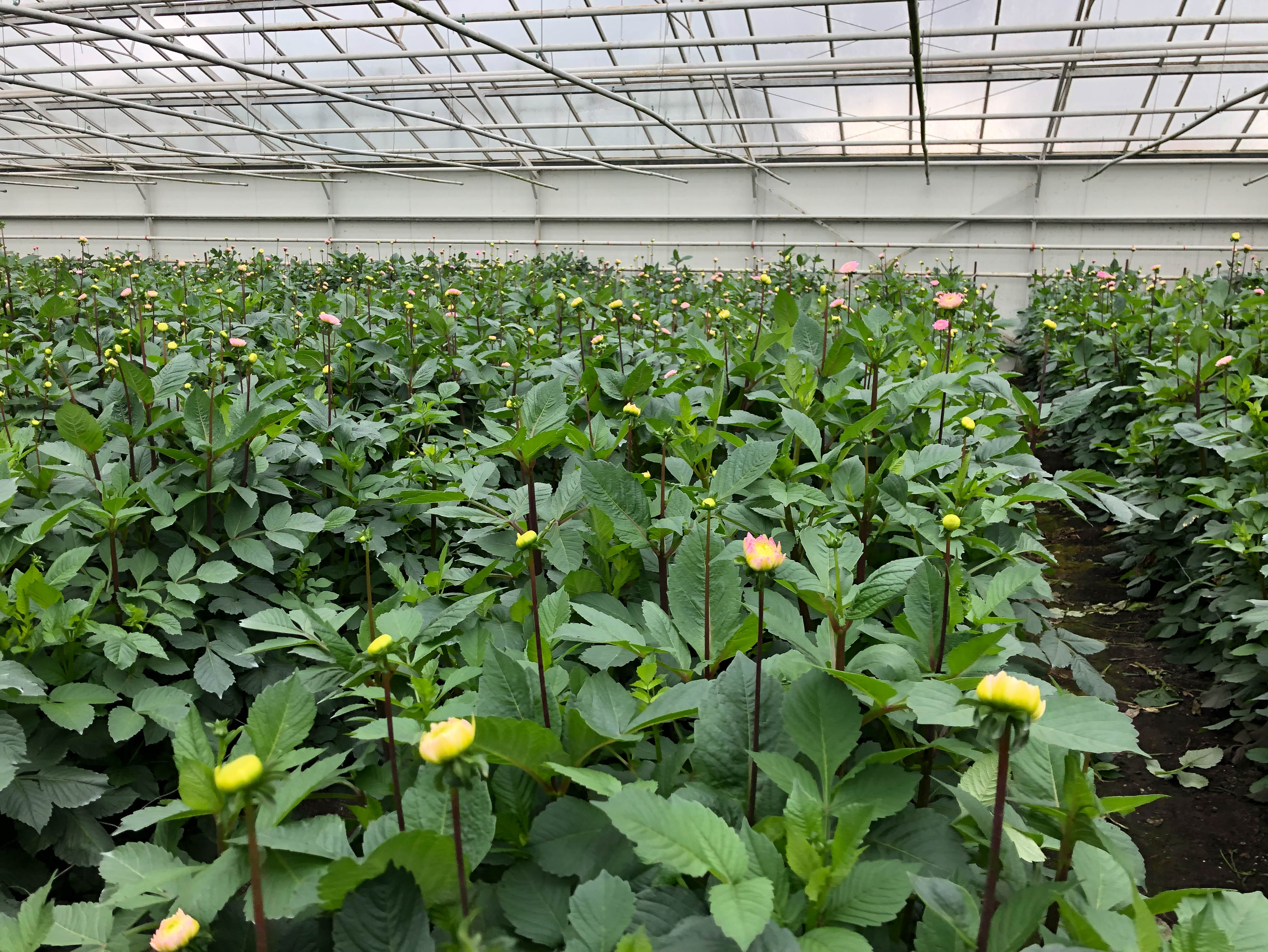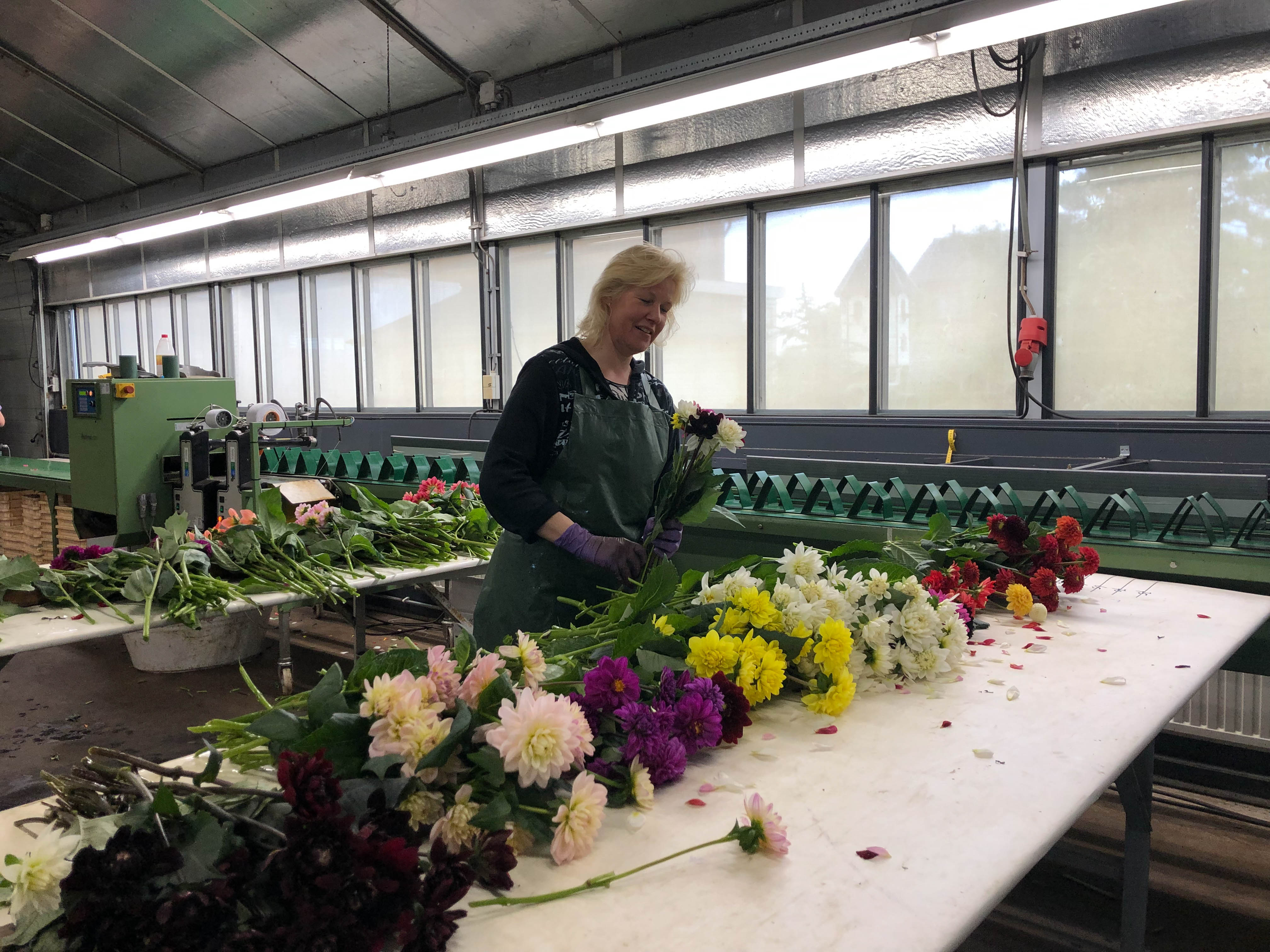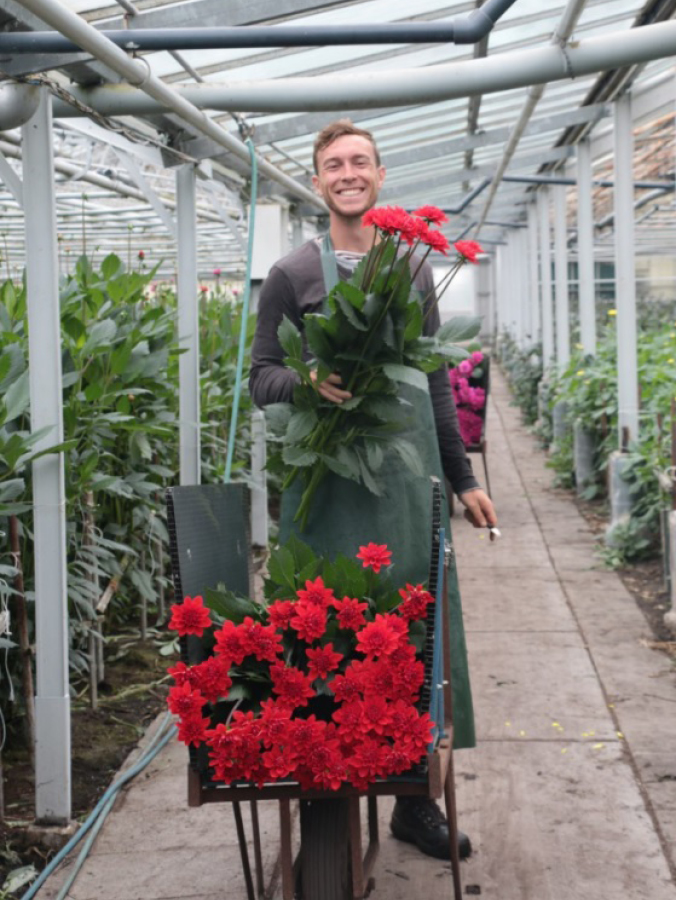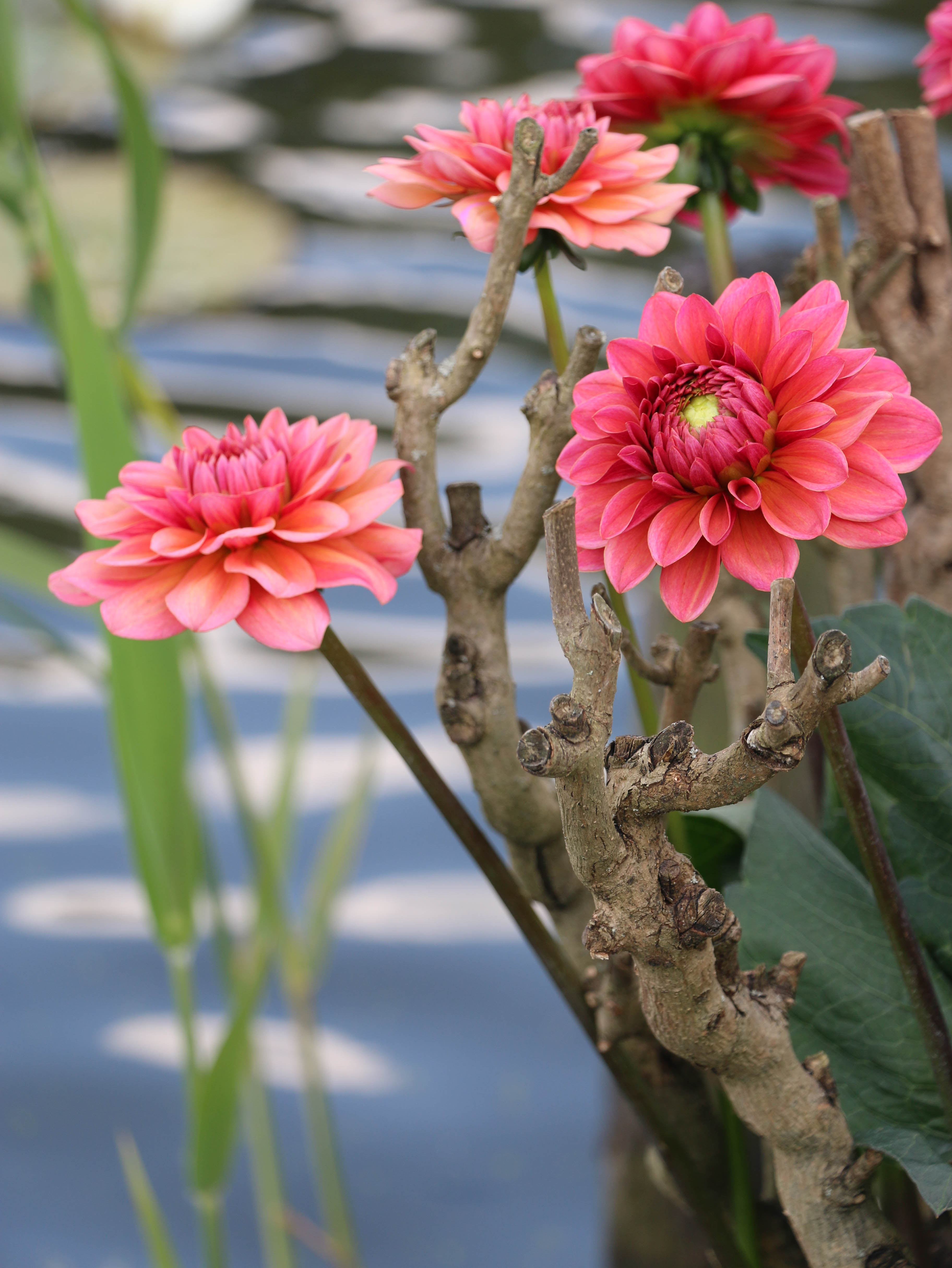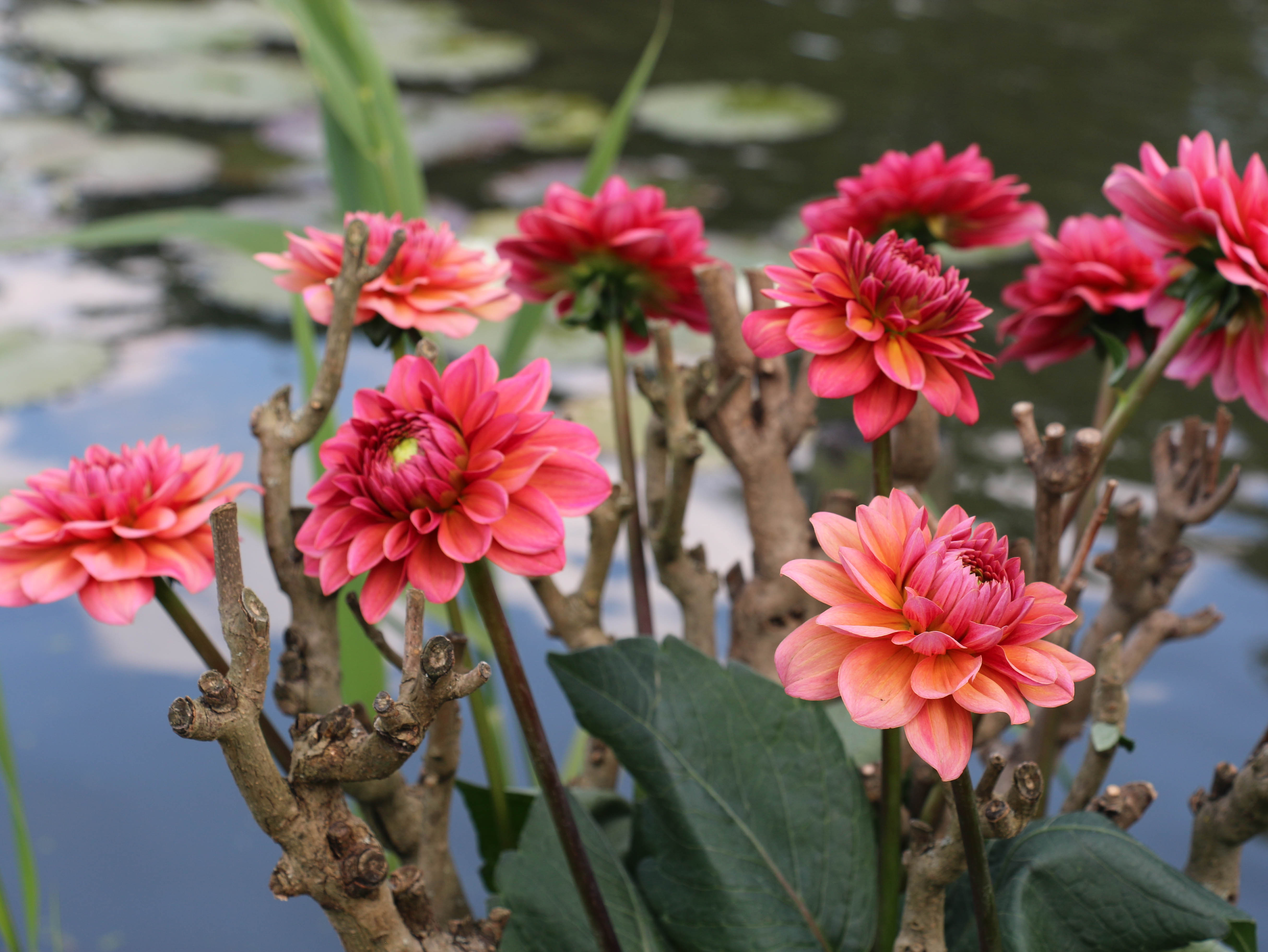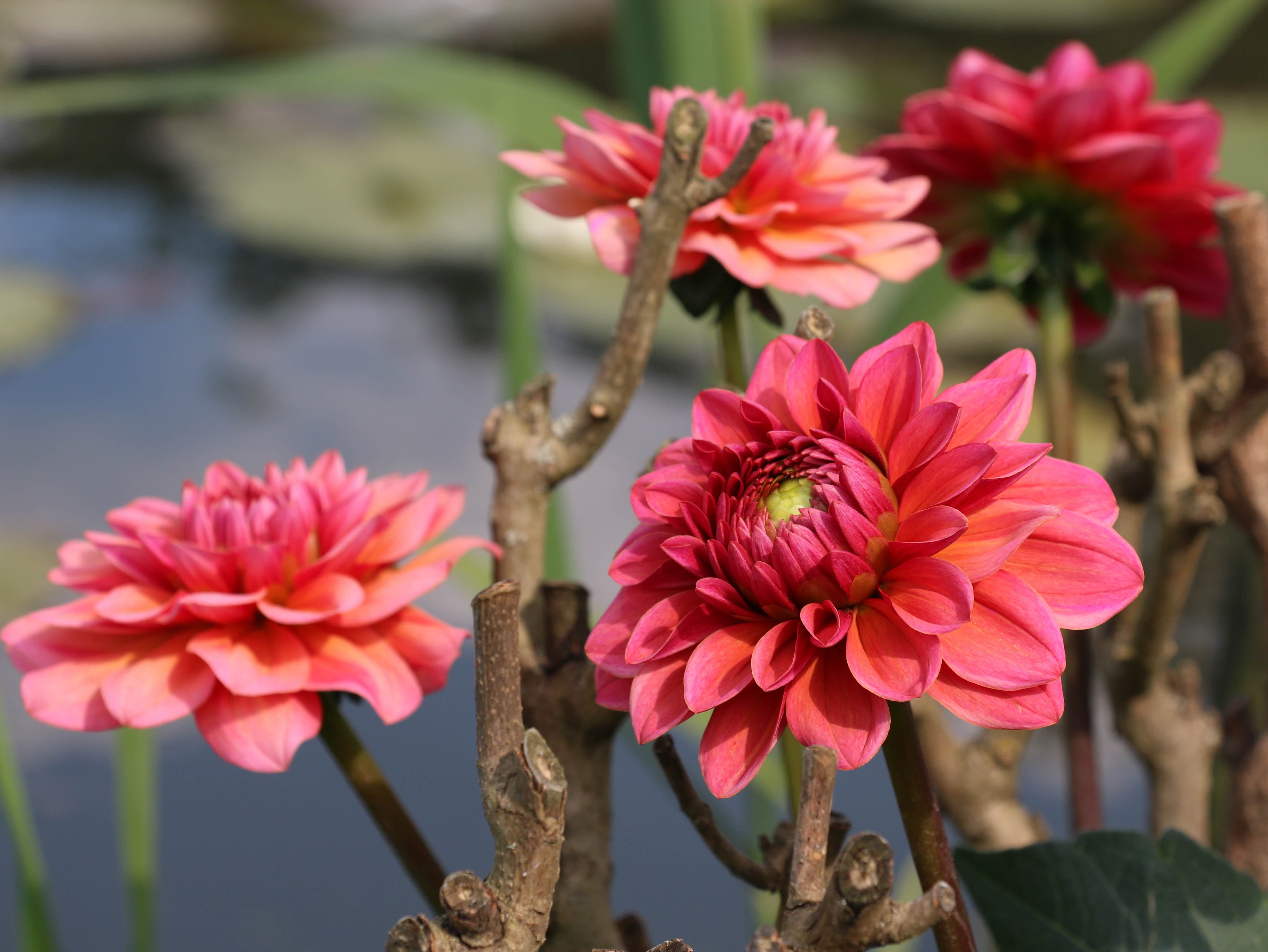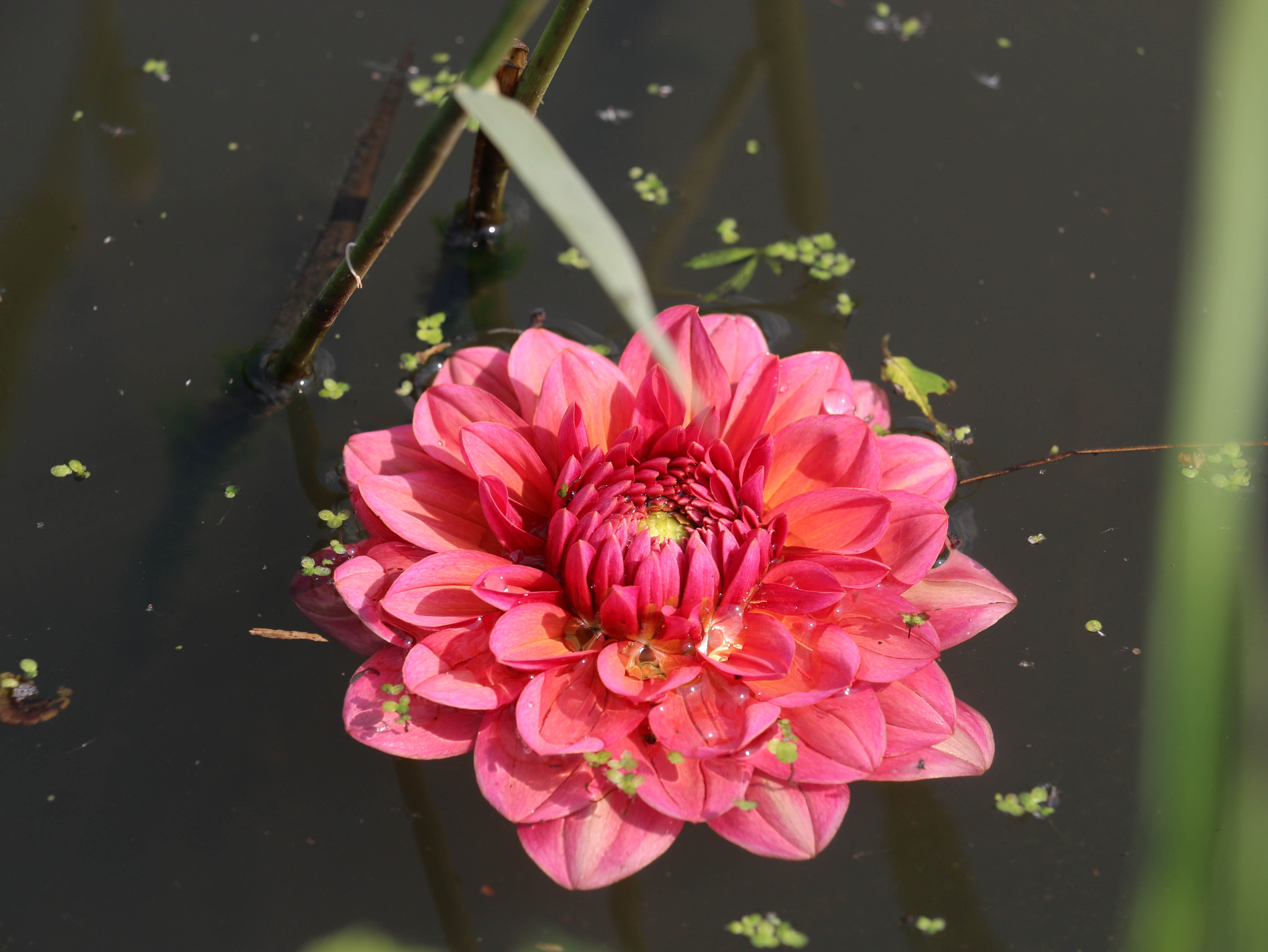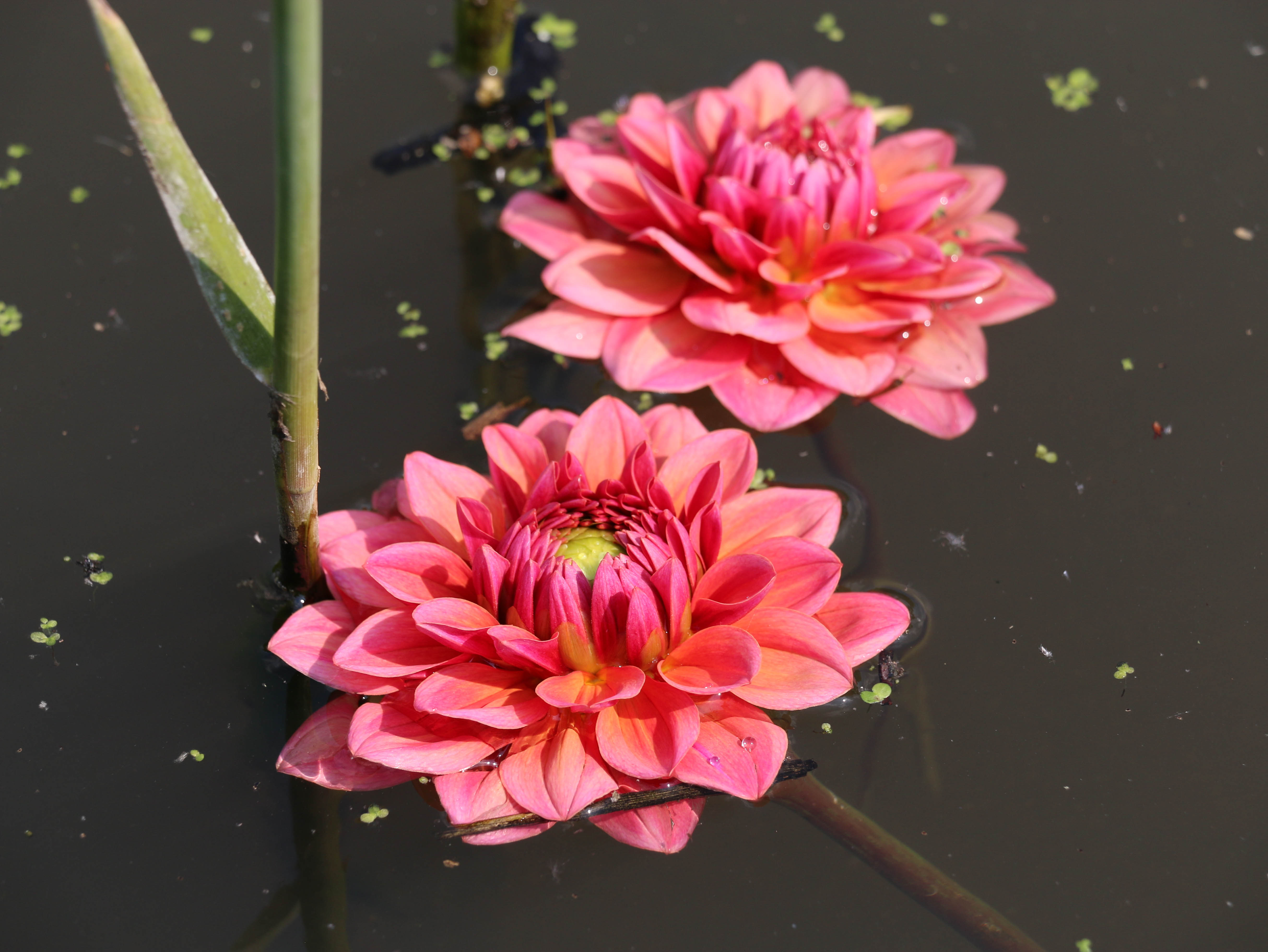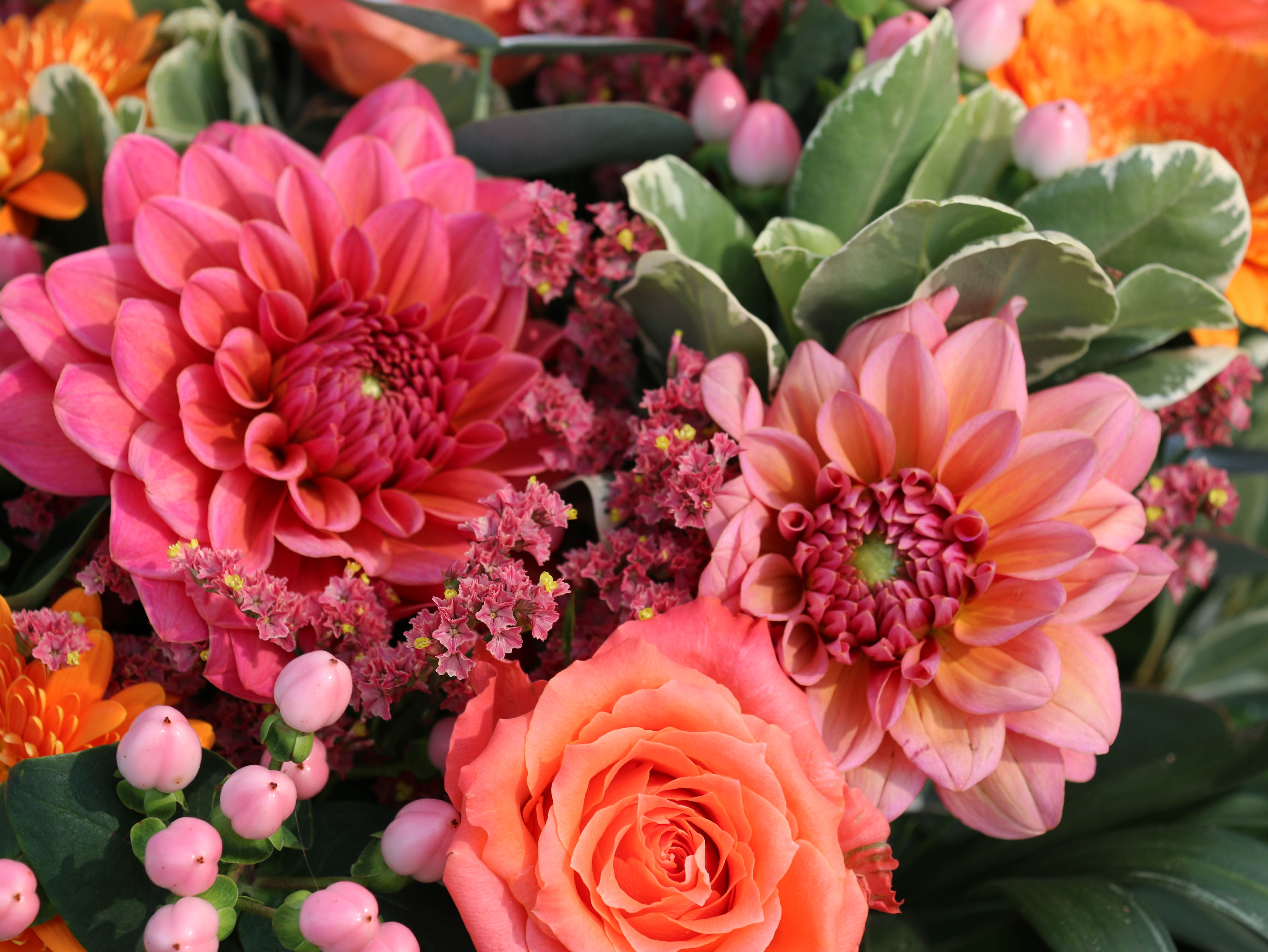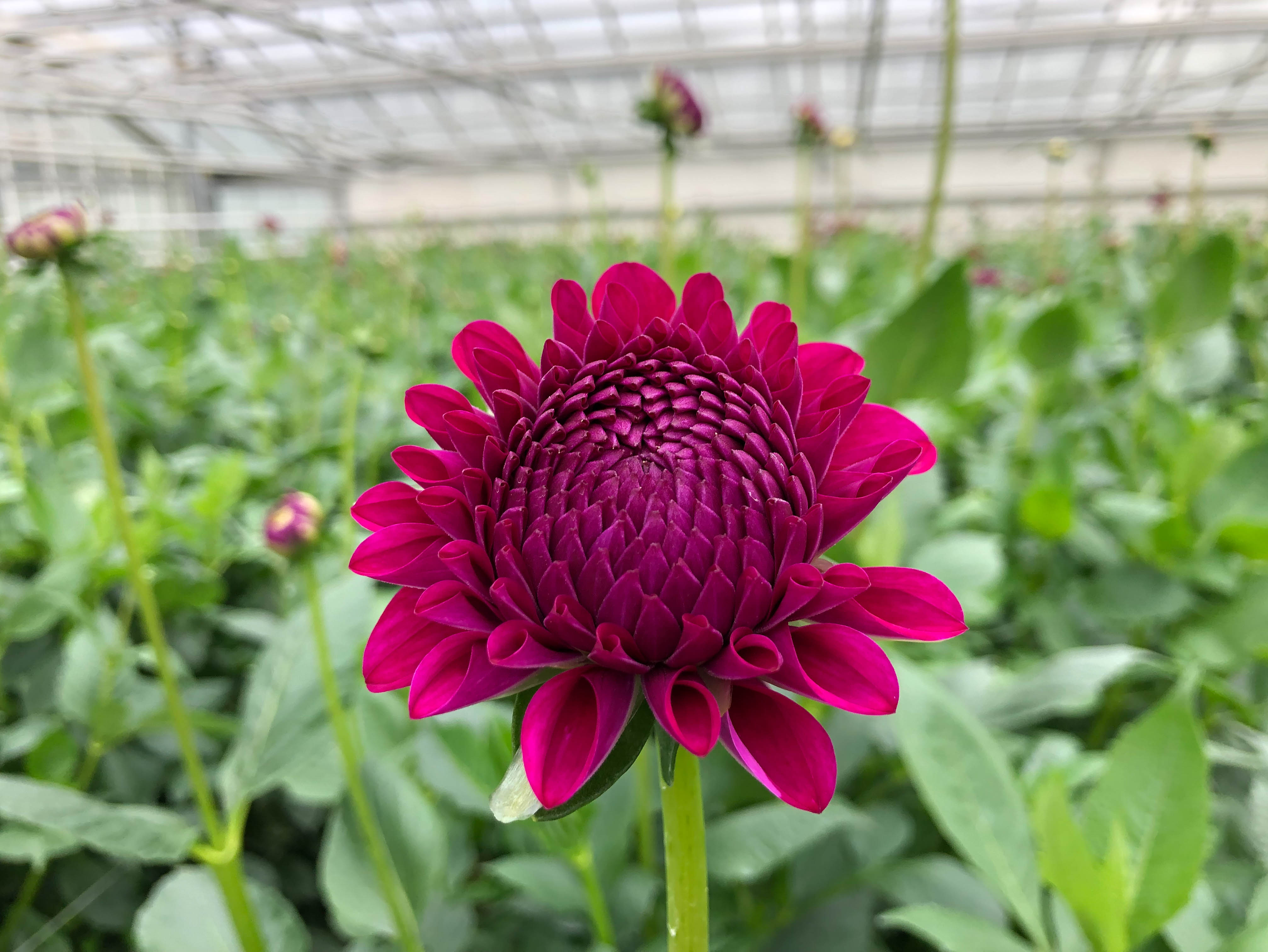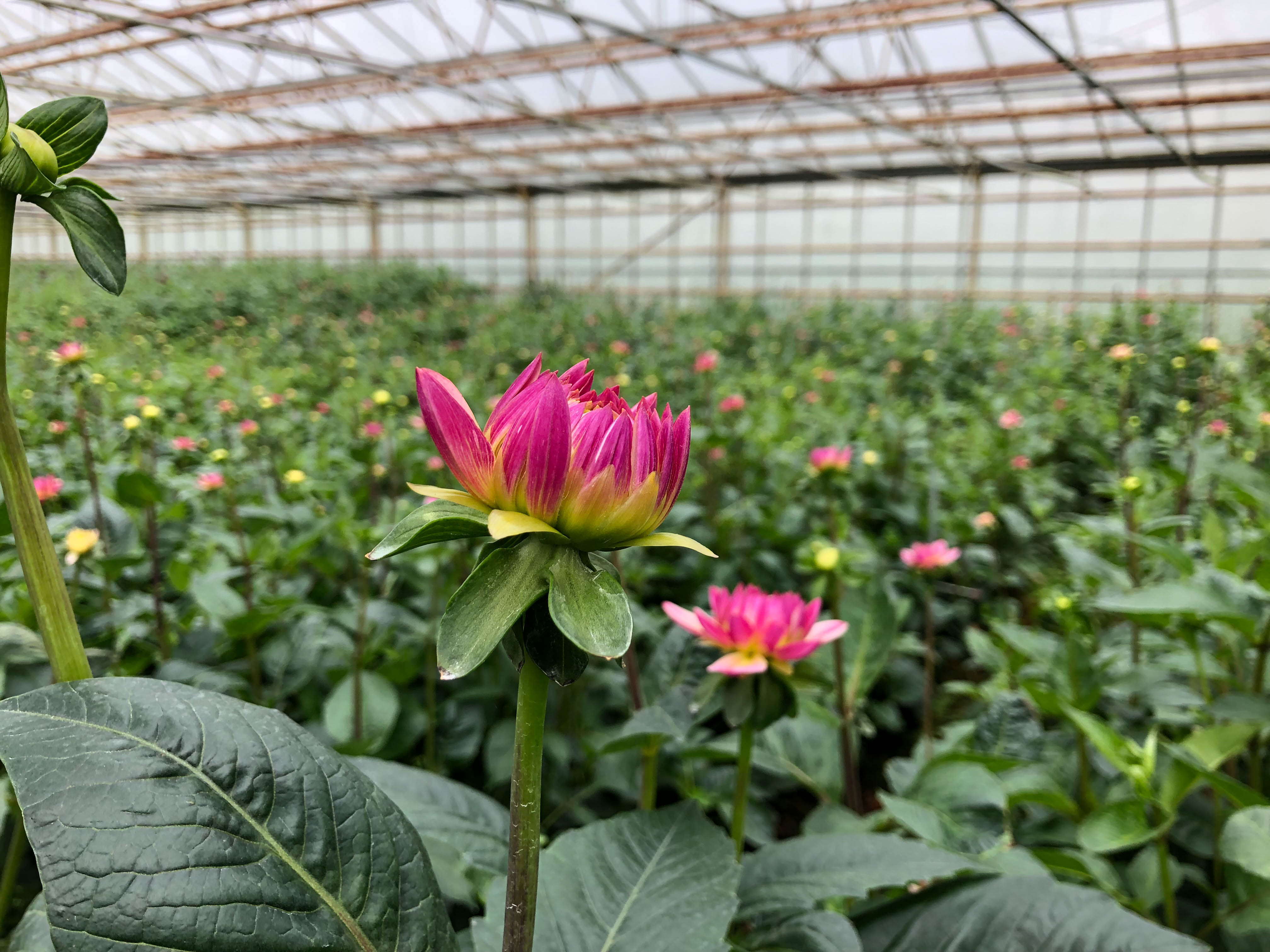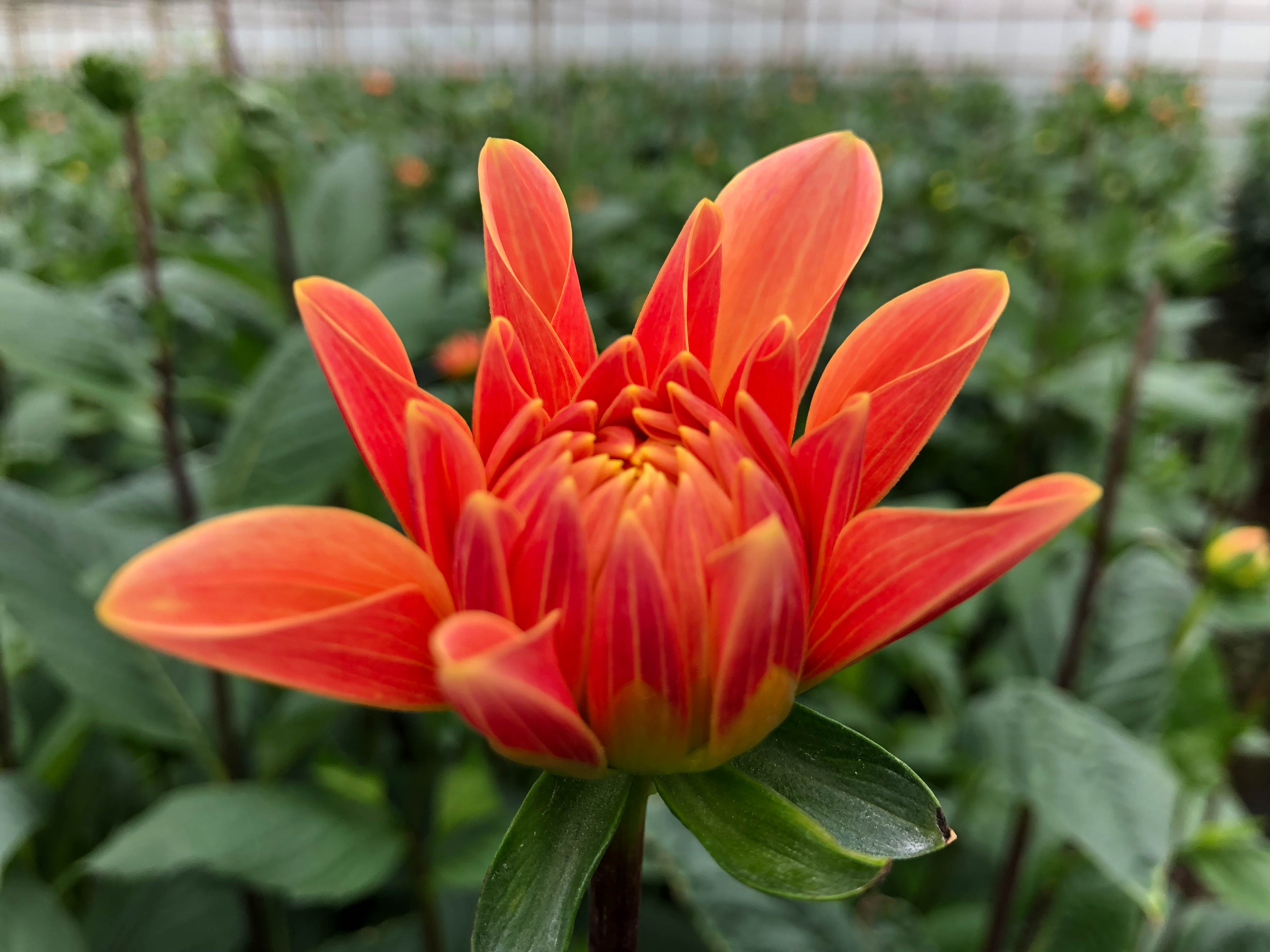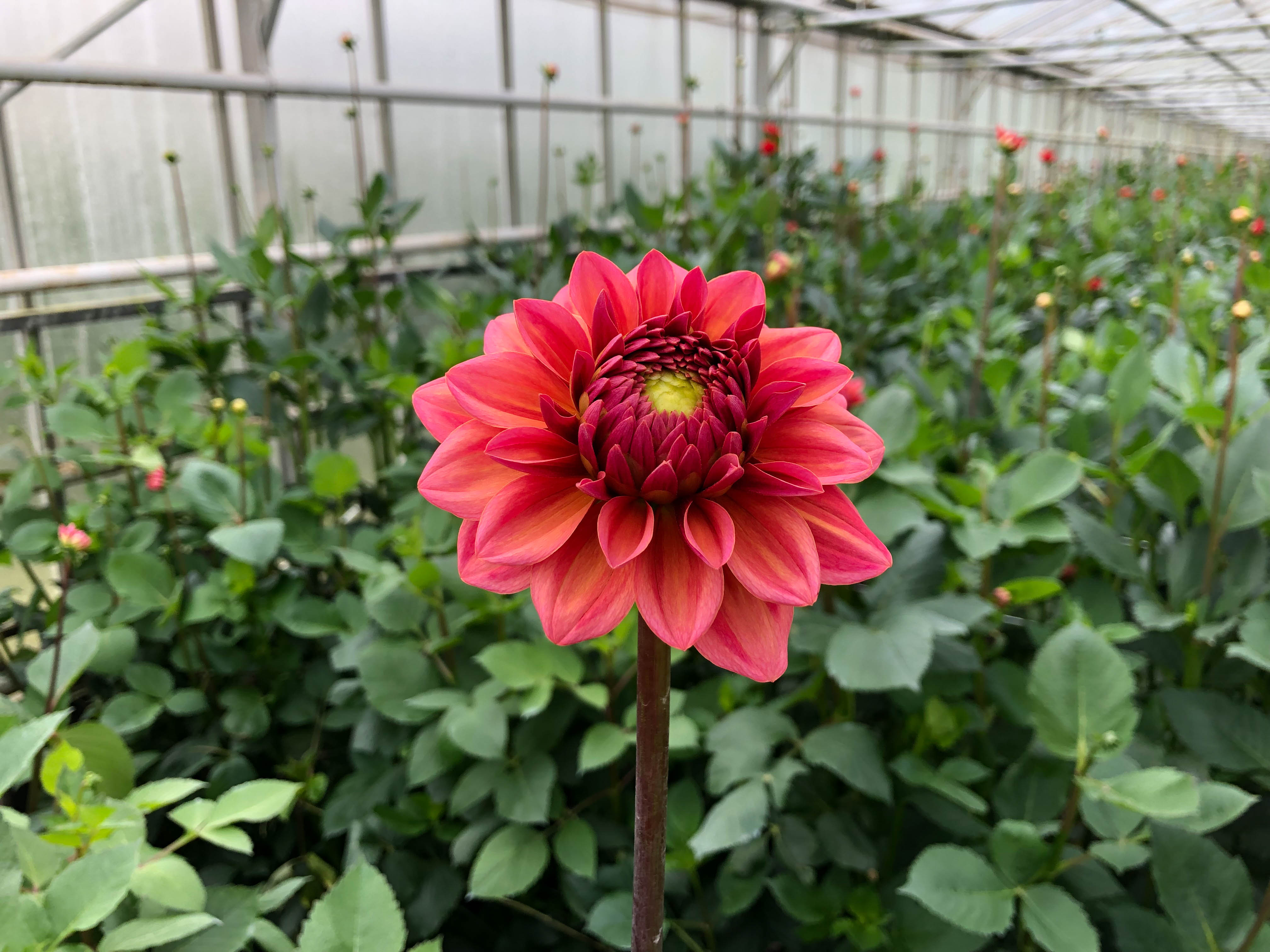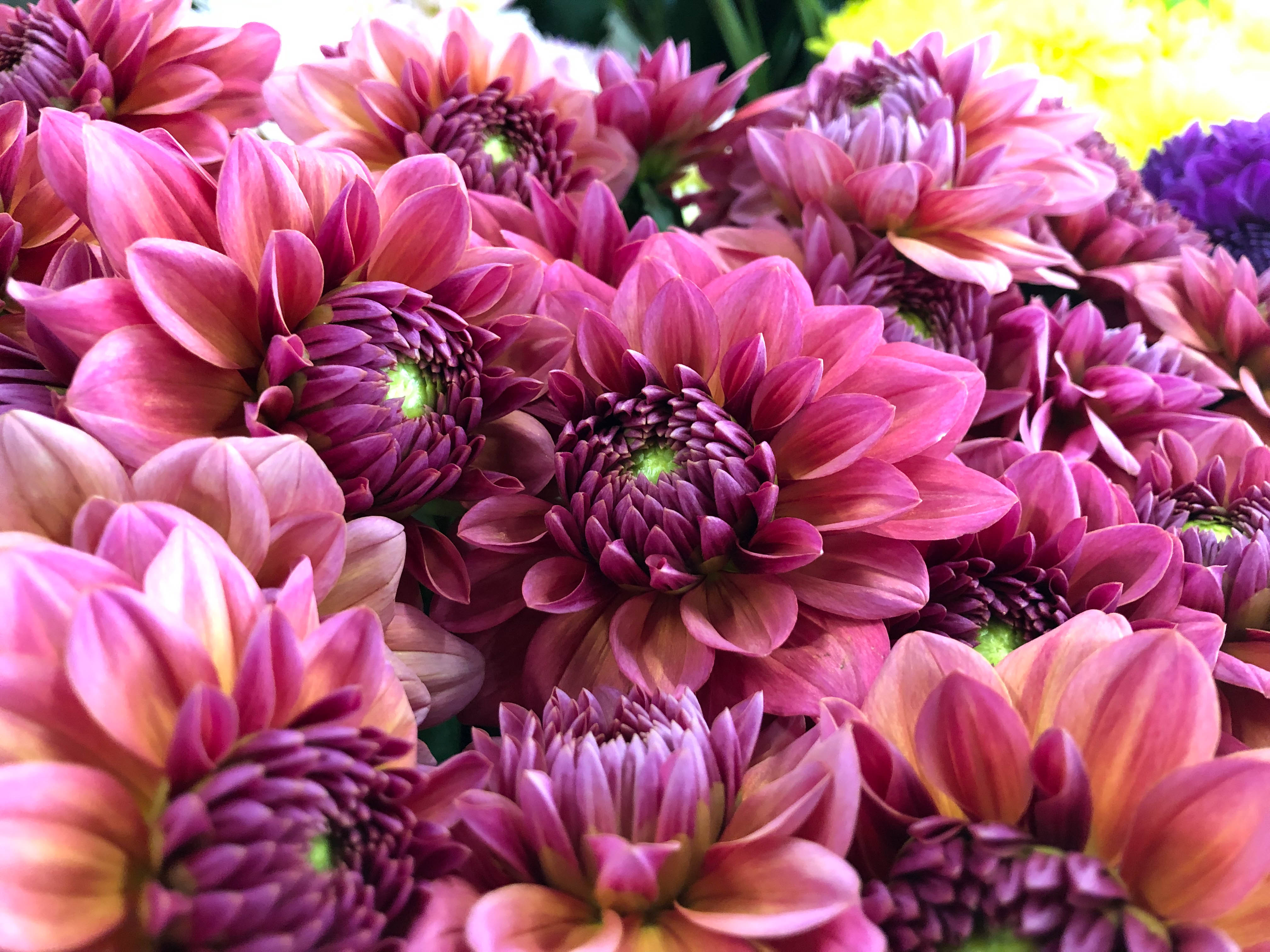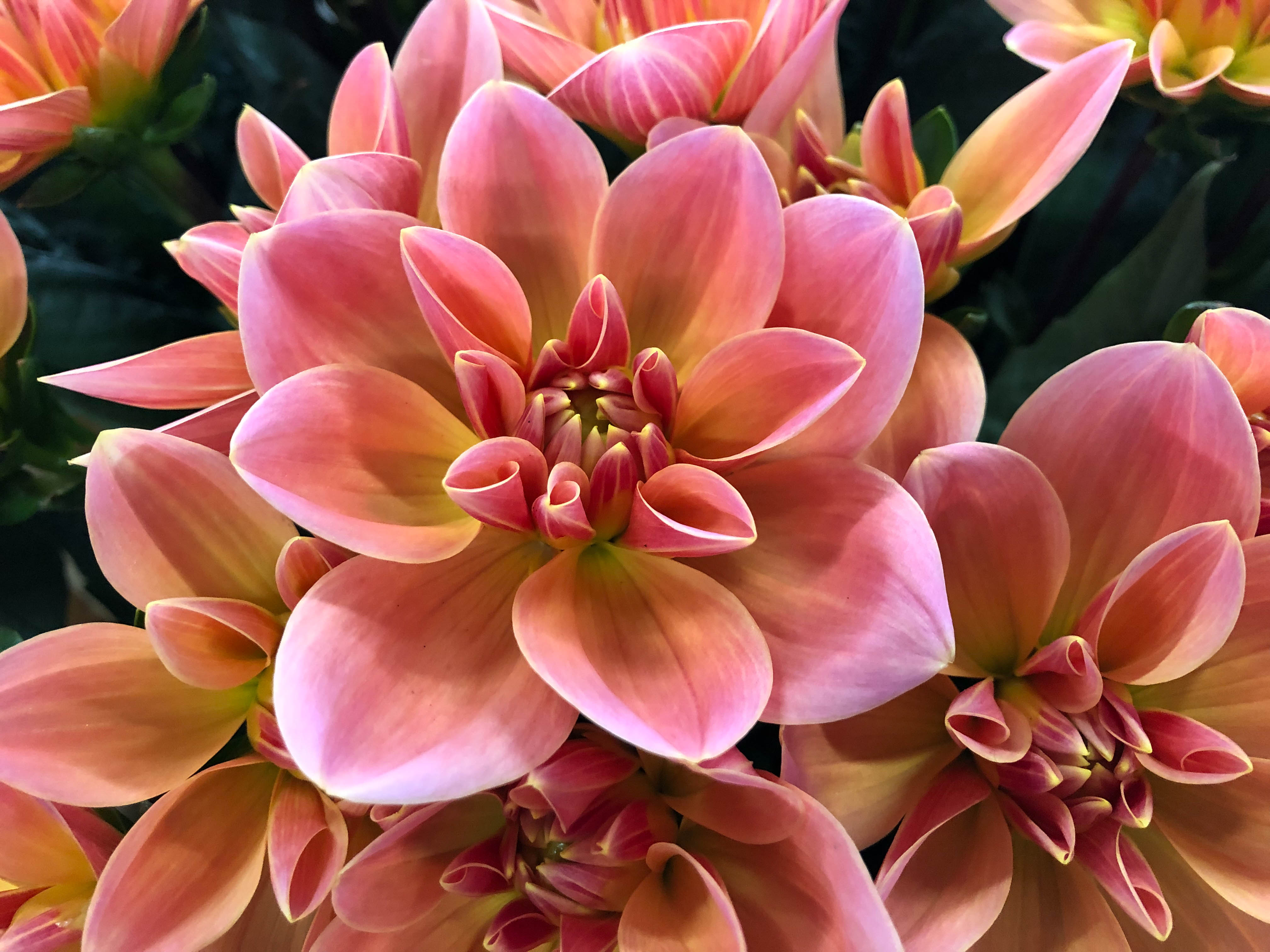This week at FloraPodium
Dahlia 'Salmon Runner'
Calendar
Mid April to mid October. Outdoor grown crop: end of June / mid-July.
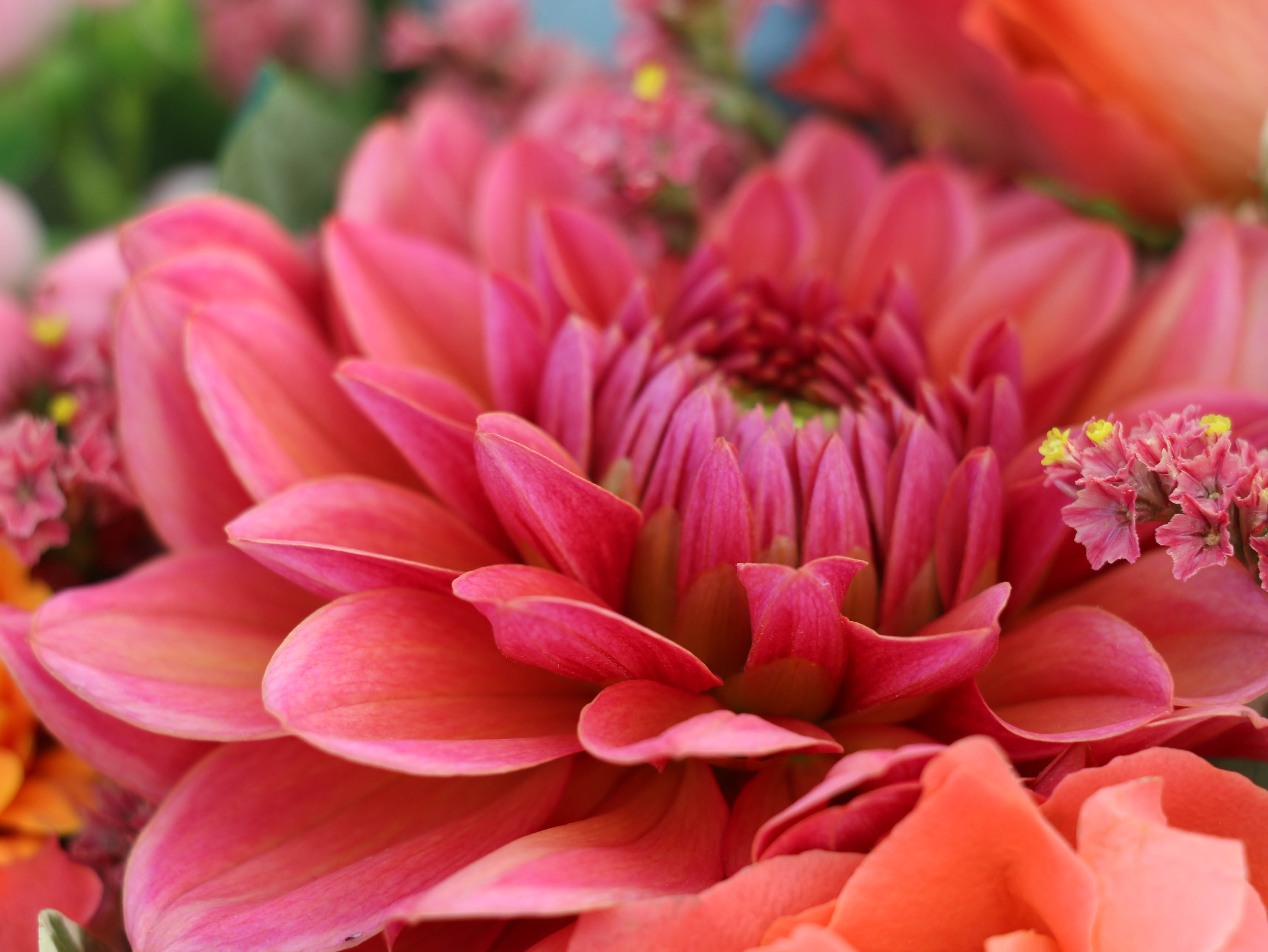
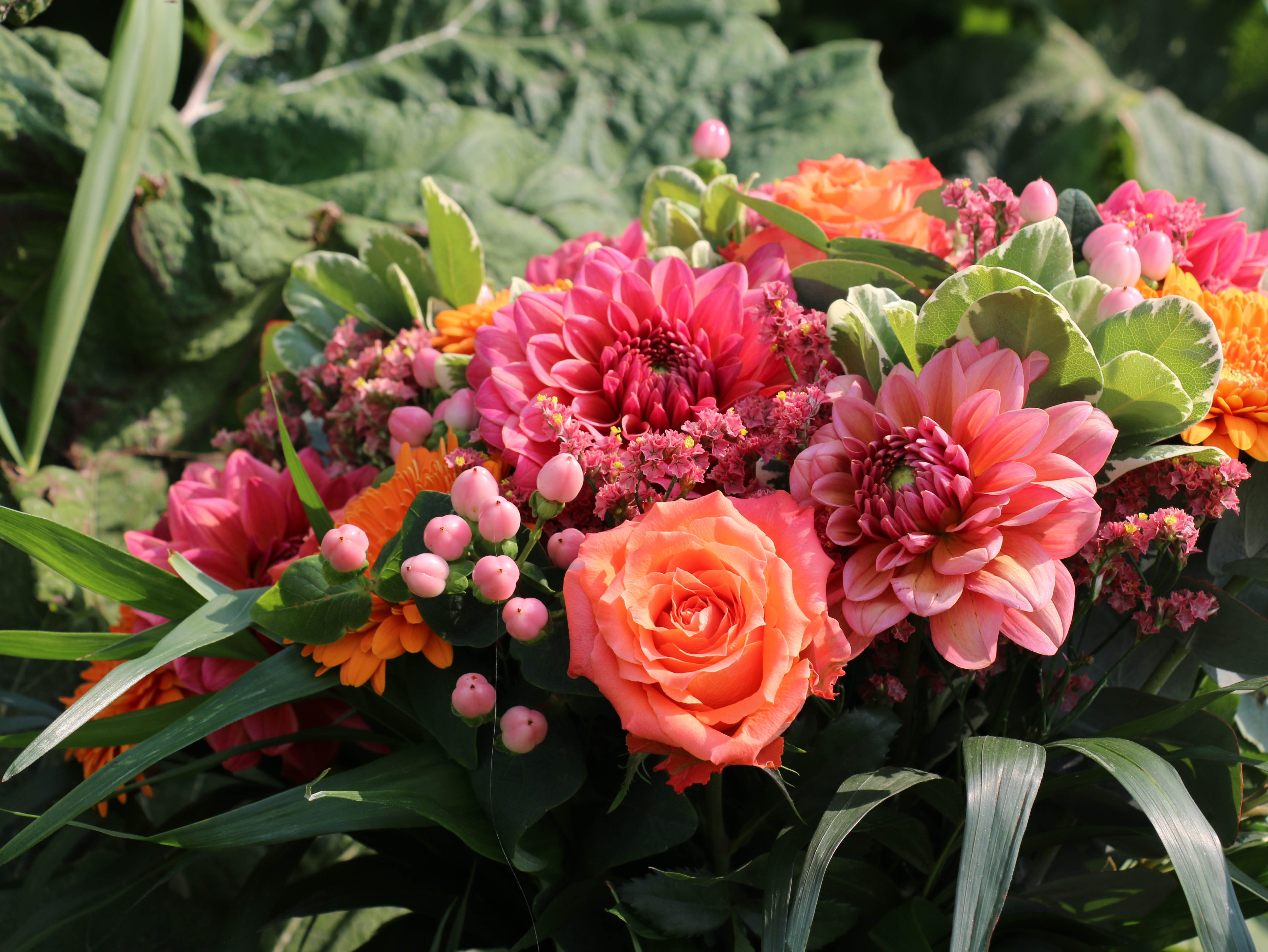
In the spotlights
If you are given the name "Dahlia" in Greece, it means "blooming flower." The name Dahlia is most often given in America, but this colorful flower is originally from Mexico. Around 1800 we brought this beauty to Europe where it was named after the Swedish botanist Dahl. The dahlia has an international reputation, but in the Netherlands we find her particularly attractive because of her lush shapes and brightly colored leaves. We went to visit Patrick from nursery Baars B.V. to admire one of its new varieties and to find out everything about this crop.
Comeback
The dahlia is back! For years the flower was overshadowed by the many other flower species that exist in the flower world. The dahlia’s bad reputation was no help either. The flower was associated with old people; dahlias were flowers for grandmas. After all, they often grew them in their garden. Over the years many new varieties have been added that no longer resemble the varieties from grandma's garden. Social media also plays a major role in this. The newest species are splashing off the screen and beautiful inspiration photos bring this old-fashioned flower back to life! And now say for yourself, this stunner shouldn't be missing in those large, colored, popular picking bouquets?
Perfect for a wedding
The dahlia is a fantastic product to create a beautiful decoration. A meeting, a dinner, a wedding ... With dahlias you can make beautiful arrangements and the most special colors definitely set the mood for a special occasion. Unfortunately, the durability of the dahlia is slightly less than most cut flowers. Often dahlias stay beautiful in the vase for no more than five days. This is mainly because the flowers have to be cut ripe, because the dahlia is a flower that does not open in the vase. But hey, what difference does that make for a special occasion? You only have to shine for one day at a wedding! And on this day, the dahlia shines with you!
The dahlia is also very popular internationally; in the United States in particular. The best way to transport the flowers is to have them shipped on water.
Mutant
A year ago Patrick added a new variety to his range. Although he has been cultivating this variety for a while now, he has recently added cultivation in a greenhouse whereas he previously only grew them outside. "Salmon Runner" is a mutant of the "Red Runner" dahlia; a dahlia with a magical color. It is a bit red and a bit orange, but the hint of pink that the petals have makes the color of this enchanting appearance somewhat indefinable.
The best-known dahlia varieties in this crop are pompon varieties, decorative varieties and water lily varieties. This has to do with the shape of the leaf, the size and color of the flower. The "Salmon Runner" is a decorative variety. Because of its shape and color, it gives an added quality to a wedding and is a real eye-catcher in a bouquet.

The cultivation
Most dahlias are grown outside, but Patrick welcomed us in a beautiful large authentic greenhouse. He grows his dahlias at the start of the season.
In the business for 25 years
Patrick has been growing dahlias in a greenhouse for over 25 years. He was one of the first growers to start this. Before growing dahlias, he cultivated roses and various types of summer flowers. Once he had cut his first dahlias, it turned out so well that he continued this cultivation. The fact that this cultivation is very labor-intensive does not make growing this flower any less attractive. Just because of the many variants and the cheerful colors, it is always a pleasure to walk through the greenhouse.
Indoor and outdoor cultivation
Production from the greenhouse starts mid-April. The first outdoor dahlias are cut by the end of June / mid-July. Not all dahlia varieties that grow outside are also suitable for growing indoors. The main thing is that the branches are nice and thick and sturdy. Most species only get these strong stems when they are outside in the open ground, where they get all the nutrients from the soil and where the sun shines.
Patrick therefore grows a different range of dahlias. He has around 14 species in his greenhouse. The biggest advantage of this indoor cultivation is the extension of the season, because it can start earlier. In addition, he can prevent illnesses much more easily and has no damage due to the weather.
From tuber to flower
The dahlia is a root vegetable. These are planted in mid-January. The most labor-intensive aspect of this cultivation is "fluffing" (also called "thieving"). By fluffing the extra leaf and side shoots are removed. By doing this you can make sure that all nutrition and strength stays in the main branch, so the quality of the stem and flower improves. Every Monday, five ladies full of positive energy start on this job. The entire greenhouse must be fluffed by Friday and then they can start again at the beginning on Monday! It is important to remove these fluffs as early as possible in the growth of the crop, because the larger the flower, the greater the chance of damage.
If the flower has finished flowering in the autumn and has been cut empty, the tubers are dug up and destroyed. They are bruised and mixed with the soil. The soil is then given a steam treatment so that it remains free of nematodes, fungi and diseases. In January new tubers are planted, ready to give new strong, radiant flowers after a few months.
Propagation of the tuber
The dahlia is a root vegetable. One of the differences between bulbs and tubers is the place where the "reserve food" is stored. Bulbs store the nutrition in the underground leaves (the skirts or scales). Tubers however store either in the fleshy root (root tubers such as the dahlia do that), or in the stem (with tubers).
Another big difference is that a bulb is frost resistant and a tuber is not. That is why the dahlia (grown outdoors) is only planted in the spring.
Patrick does not breed the tubers himself. That is why he works closely together with different breeders to spot and grow new varieties, so that he can always innovate his assortment and offer a different range!
FloraPodium, 6 June 2019
